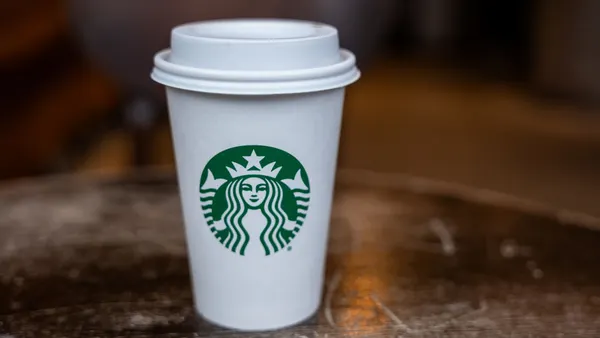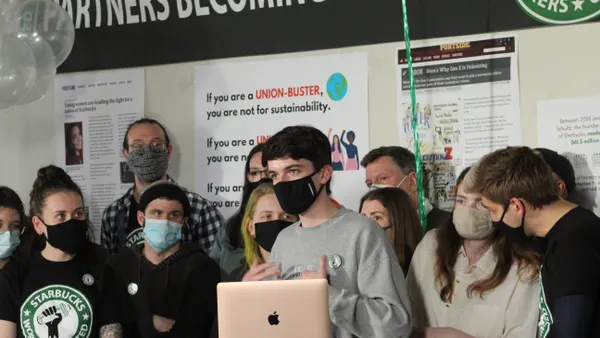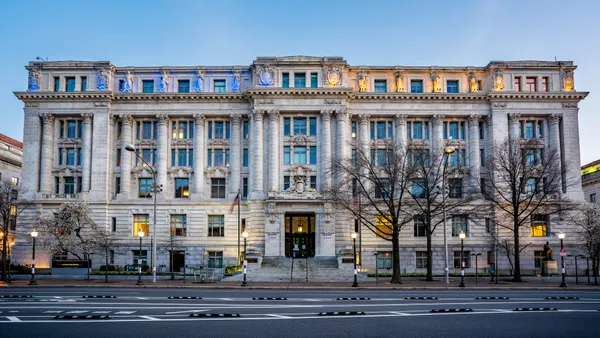Dive Brief:
- Starbucks transactions per store per day are still below pre-COVID-19 levels and lag behind year-ago levels, Rachel Ruggeri, Starbucks chief financial officer, said Thursday on the company’s Q1 2023 earnings call. Ruggeri did not specify how much that metric eroded year over year.
- Comparable sales in North America and the U.S. were up 10%, which included a 9% uptick in average ticket and 1% increase in comparable transactions, according to the company’s earnings release.
- Transactions were more heavily concentrated in specific dayparts of morning and midday, Ruggeri said, which is prompting the chain to push for greater kitchen efficiency and new equipment so it can speed up orders and increase labor productivity.
Dive Insight:
Starbucks’ revenue growth is mostly attributable to pricing, Ruggeri told analysts.
“Our comp and our revenue in North America right now, largely in our U.S. business, is benefiting from pricing that was taken in back half of last year,” Ruggeri said. But traffic has increased during specific dayparts, putting pressure on store-level operations.
According to Ruggeri, traffic at Starbucks through the morning and midday, up to about 1 p.m., is in line with 2019 traffic, and transactions and ticket have both increased in those dayparts. The chain is doubling down on speed of service and drink customization to increase traffic.
“Our reinvention plan is squarely rooted and creating capacity in our busiest day parts. So as we start moving along, our reinvention plan is going to help us increase that capacity,” Ruggeri said.
Starbucks’ reinvention plan, first hinted at in July, will eventually include a new Starbuck Siren kitchen system optimized for cold beverage assembly. Ruggeri said this change would not roll out on a large scale until 2024-2025, however. The scale of the company’s system makes dramatic changes to equipment and operations difficult to execute quickly, Sara Trilling, president of Starbucks North America, said.
Smaller changes to equipment and processes are ongoing, with Starbucks deploying handheld order points in 54% of North American units. Those handheld order points, Trilling said, are useful for workers at the drive-thru and speed up order taking and processing. Other changes include cold beverage labelers, available in 81% of stores, Mastrena II espresso machines in 94% of stores and new warming ovens in 90% of stores.
Ruggeri said productivity and retention have increased as the reinvention plan has progressed, and that these changes will lead to margin improvement.
Frank Britt, the company’s chief strategy and transformation officer, said employee retention has improved considerably compared to 2022.
“We've improved hourly partner retention rates by over 5% versus prior year, same period. We've improved over 8% versus the highest turnover period, which was in Q2 of '22,” Britt said. “This reduces the time and the investment required for additional new hires and it helps stabilize operations.”
According to Britt, increasing employment in the sector and low rates of unemployment have not meaningfully dented the company’s flow of applicants.












